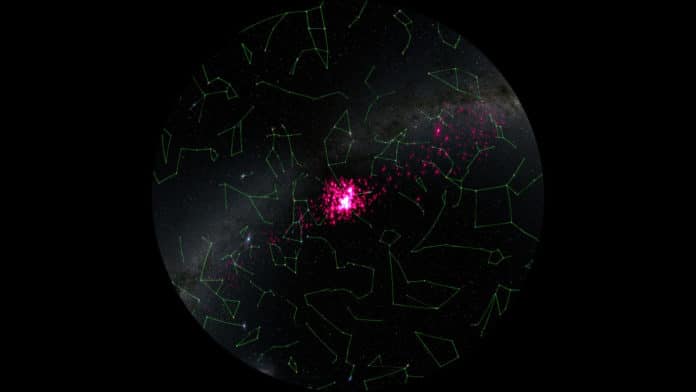With the Ursa Major Moving Group’s exception, the Hyades cluster is the nearest open cluster, located about 153 light-years away from the Sun. The cluster is easily visible in both northern and southern hemispheres as a conspicuous ‘V’ shape of bright stars- marking the bull’s head in the constellation of Taurus.
The latest observation suggests that the cluster is being disrupted by the gravitational influence of a massive but unseen structure in our galaxy. The discovery comes out while studying how a nearby star cluster is merging into the general background of stars in our galaxy.
If this is happening, this might provide evidence for a suspected population of ‘dark matter subhalos. These imperceptible clouds of particles are believed to be relics from the formation of the Milky Way. They are currently spread across the galaxy, making up an undetectable substructure that emits a noticeable gravitational effect on whatever floats excessively close.
This discovery was based on Gaia’s Early third Data Release (EDR3) and data from the second release.
As a result, the cluster will gradually lose its stars due to start tugging. The star tugging- stars move within the cluster they tug at each other gravitationally- changes the velocity of stars and causes some stars to move towards the cluster’s edges. From there, the stars can be swept out by the gravitational pull of the galaxy, forming two long tails.
The tails are known as tidal tails, among which one tail trails the star cluster, the other pulls out ahead of it. Until recently, no one had detected these tidal tails from a nearby open star cluster.
To detect tidal tails, scientists need to spot which stars in the sky are moving similarly to the star cluster. Thanks to ESA’s Gaia, it makes it easy for scientists to precisely measure the distance and movement of more than a billion stars in our galaxy.
ESA Research Fellow Tereza Jerabkova said, “These are the two most important quantities that we need to search for tidal tails from star clusters in the Milky Way.”
Using a computer model, scientists tend to understand the range of orbits to look for. The model simulates the various perturbations that escaping stars in the cluster might feel during their hundreds of millions of years in space.
After running and comparing the simulations to the real data, scientists determined thousands of former Gaia data members. These stars now stretch for thousands of light-years across the galaxy in two enormous tidal tails.
Scientists were a little shocked after knowing that something is missing in the trailing tidal tail. It implies that something much more brutal is taking place than the star cluster gently ‘dissolving.’
After running the simulation one more time, Tereza showed that the data could be reproduced if that tail had collided with a cloud of matter containing about 10 million solar masses.
She said, “There must have been a close interaction with this massive clump, and the Hyades just got smashed.”
“But what could that clump be? There are no observations of a gas cloud or star cluster that massive nearby. If no visible structure is detected even in future targeted searches, it could be a dark matter sub-halo.”
“With Gaia, the way we see the Milky Way has completely changed. And with these discoveries, we will be able to map the Milky Way’s sub-structures much better than ever before.”
“And having proved the technique with the Hyades, we are now extending the work by looking for tidal tails from other, more distant star clusters.”
Journal Reference:
- Tereza Jerabkova et al. The 800 pc long tidal tails of the Hyades star cluster: Possible discovery of candidate epicyclic overdensities from an open star cluster⋆ DOI: 10.1051/0004-6361/202039949
